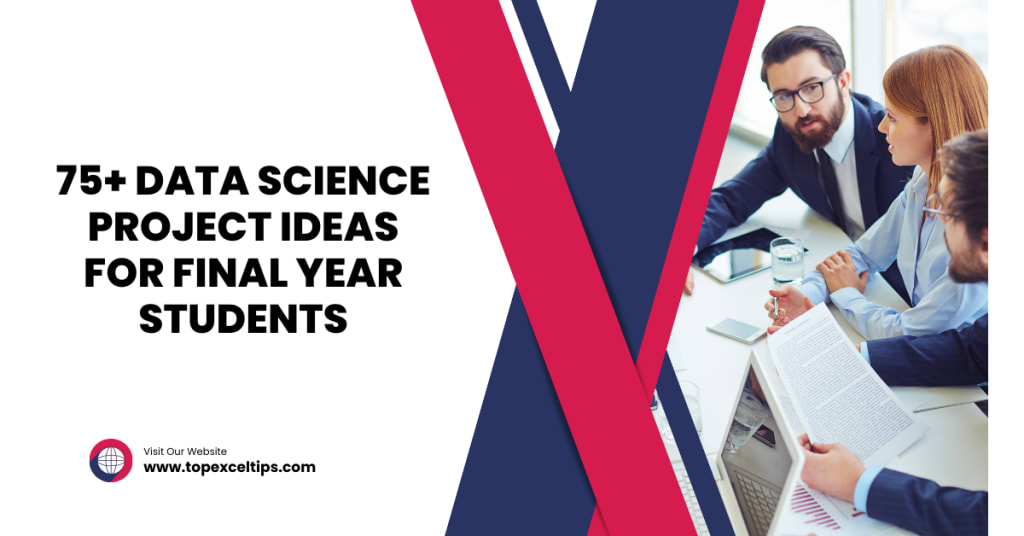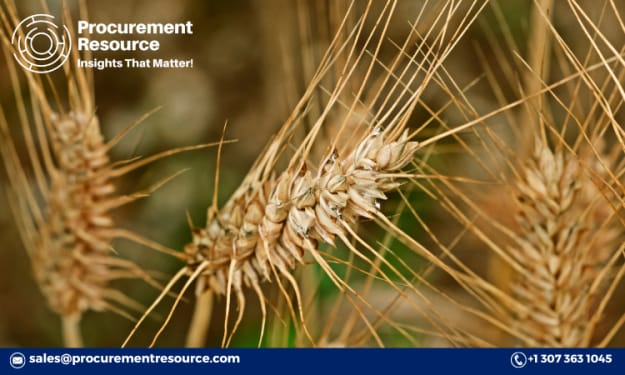75+ Data Science Project Ideas for Final Year Students
Data Science Project Ideas for Final Year Students

In the ever-evolving field of Data Science, hands-on experience is crucial for mastering the concepts and tools that define this dynamic discipline. As a final year student, choosing the right project can not only enhance your learning but also significantly boost your resume, showcasing your ability to tackle real-world problems with data-driven solutions.
In this blog, we will explore a variety of innovative and impactful project ideas tailored to different interests and skill levels. Whether you're passionate about machine learning, data visualization, or big data analytics, we've got you covered. These projects are designed to challenge you, stimulate your creativity, and provide a solid foundation for your future career in Data Science.
Join us as we delve into exciting project ideas that will help you harness the power of data and stand out in the competitive field of Data Science.
What is Data Science?
Data Science is an interdisciplinary field that combines statistical analysis, programming skills, domain knowledge, and data visualization to extract meaningful insights and knowledge from structured and unstructured data. It involves various processes, tools, and algorithms to make sense of complex data and solve real-world problems.
At its core, Data Science encompasses several key components:
Data Collection and Cleaning: Gathering data from various sources and ensuring it is accurate, consistent, and usable.
Data Analysis and Exploration: Examining data sets to uncover patterns, correlations, and trends.
Statistical Methods: Applying mathematical techniques to analyze data and draw conclusions.
Machine Learning and Predictive Modeling: Using algorithms and models to make predictions or classify data based on historical information.
Data Visualization: Creating visual representations of data to communicate findings effectively.
Why Final Year Data Science Projects Matter?
Final year Data Science projects are crucial for several reasons, marking an important phase in a student's academic and professional journey. Here’s why they matter:
1. Application of Knowledge
Final year projects allow students to apply theoretical concepts learned throughout their coursework in a practical setting. This hands-on experience is essential for reinforcing and deepening their understanding of data science principles.
2. Skill Development
These projects help students develop critical skills such as data analysis, programming, statistical modeling, and machine learning. By working on real-world problems, students gain proficiency in using tools and techniques that are in high demand in the industry.
3. Problem-Solving Abilities
Tackling complex projects enhances students' problem-solving abilities. They learn how to approach challenges methodically, devise strategies, and implement solutions, which are valuable skills in any professional setting.
4. Portfolio Building
A well-executed final year project serves as a significant addition to a student’s portfolio. It provides tangible proof of their capabilities, which can be showcased to potential employers during job applications and interviews.
5. Innovation and Creativity
Projects encourage students to think creatively and innovatively. They often involve exploring new ideas, experimenting with different approaches, and developing unique solutions, fostering a spirit of innovation.
How to I Choose the Right Data Science Project Idea?
Here are 80 Data Science project ideas for final year students:
Machine Learning
House Price Prediction: Build a model to predict house prices based on various features like location, size, and amenities.
Stock Market Prediction: Use historical stock data to predict future stock prices or trends.
Sentiment Analysis: Analyze social media posts or reviews to determine public sentiment about a product or service.
Customer Churn Prediction: Predict which customers are likely to leave a service based on their usage patterns and behaviors.
Fraud Detection: Develop a system to detect fraudulent transactions in banking or e-commerce.
Spam Email Classification: Create a model to classify emails as spam or non-spam.
Image Classification: Build a model to classify images into different categories, such as identifying different species of animals.
Recommendation System: Develop a recommendation system for movies, books, or products based on user preferences.
Traffic Prediction: Predict traffic congestion levels based on historical data and real-time inputs.
Handwritten Digit Recognition: Create a model to recognize handwritten digits using the MNIST dataset.
Data Visualization
Covid-19 Data Dashboard: Build an interactive dashboard to visualize Covid-19 case statistics globally or regionally.
Air Quality Monitoring: Visualize air quality data to show pollution levels across different cities.
Election Data Analysis: Create visualizations of election results, showing vote distributions and demographics.
Sales Data Visualization: Develop interactive charts to visualize sales data over time for a retail company.
Weather Data Visualization: Visualize weather patterns and trends using historical weather data.
Health Data Dashboard: Build a dashboard to visualize health metrics like heart rate, steps, and calories burned.
Social Media Analytics: Visualize engagement metrics from social media platforms like Twitter or Instagram.
Crime Data Visualization: Map crime data to show hotspots and trends in different areas.
Real Estate Trends: Visualize real estate market trends, showing price changes over time and across locations.
Sports Performance Analysis: Create visualizations to analyze player or team performance in various sports.
Natural Language Processing (NLP)
Chatbot Development: Build an intelligent chatbot for customer service or personal assistance.
Text Summarization: Develop a tool to automatically summarize long documents or articles.
Language Translation: Create a model to translate text from one language to another.
Named Entity Recognition: Extract and classify entities like names, dates, and locations from text.
Topic Modeling: Identify topics in a collection of documents using techniques like LDA.
Speech Recognition: Develop a model to convert spoken language into text.
Text Generation: Create a text generation model to write articles, stories, or code snippets.
Sentiment Analysis on Tweets: Analyze the sentiment of tweets about a particular topic or event.
Document Classification: Classify documents into predefined categories, such as news articles by topic.
Spam Detection in Messages: Detect spam messages in SMS or chat applications.
Big Data Analytics
Hadoop-based Data Processing: Process large datasets using Hadoop and visualize the results.
Real-time Data Streaming with Apache Kafka: Analyze real-time data streams for applications like monitoring or alerts.
Customer Segmentation: Segment customers into different groups based on purchasing behavior using big data tools.
Recommendation Systems with Spark: Build scalable recommendation systems using Apache Spark.
Network Traffic Analysis: Analyze network traffic data to detect anomalies or intrusions.
Log Data Analysis: Process and analyze server log data to identify usage patterns or errors.
Social Media Trend Analysis: Use big data tools to analyze trends and patterns on social media platforms.
Predictive Maintenance: Predict equipment failures in industrial settings using sensor data.
Genomic Data Analysis: Analyze large-scale genomic data to identify patterns related to diseases.
Retail Analytics: Process large retail transaction datasets to uncover insights and trends.
Healthcare Analytics
Disease Prediction: Predict the likelihood of diseases such as diabetes or heart disease based on patient data.
Patient Readmission Prediction: Develop a model to predict patient readmissions to hospitals.
Medical Image Analysis: Analyze medical images like X-rays or MRIs to detect abnormalities.
Drug Effectiveness Analysis: Study the effectiveness of different drugs based on patient outcomes.
Healthcare Cost Prediction: Predict healthcare costs for patients based on their medical history and demographics.
Electronic Health Record (EHR) Analysis: Analyze EHR data to improve patient care and operational efficiency.
Symptom Checker: Develop a tool to suggest possible conditions based on reported symptoms.
Health Risk Assessment: Assess health risks for individuals based on lifestyle and medical data.
Telemedicine Optimization: Analyze telemedicine data to improve service delivery and patient satisfaction.
Chronic Disease Management: Use data to manage and monitor chronic diseases like asthma or hypertension.
Computer Vision
Facial Recognition System: Build a system to recognize and verify faces.
Object Detection: Develop a model to detect and classify objects in images or videos.
Autonomous Vehicle Navigation: Create a vision system for autonomous vehicles to navigate and detect obstacles.
Image Segmentation: Segment images into different regions for applications like medical imaging.
Traffic Sign Recognition: Recognize and classify traffic signs from road images.
Emotion Detection from Images: Detect human emotions from facial expressions in images.
Gesture Recognition: Recognize and interpret human gestures for human-computer interaction.
Aerial Image Analysis: Analyze aerial images for applications like agriculture or urban planning.
Image Super-Resolution: Enhance the resolution of images using deep learning techniques.
Style Transfer: Implement neural style transfer to apply artistic styles to images.
Financial Analytics
Credit Scoring: Develop a model to predict credit scores based on financial history.
Loan Default Prediction: Predict the likelihood of loan defaults using borrower data.
Portfolio Optimization: Optimize investment portfolios to maximize returns and minimize risk.
Fraud Detection in Financial Transactions: Detect fraudulent activities in financial transactions.
Algorithmic Trading: Develop algorithms for automated stock trading based on market data.
Customer Lifetime Value Prediction: Predict the lifetime value of customers for financial planning.
Risk Assessment: Assess financial risks for investments or insurance products.
Bank Customer Segmentation: Segment bank customers based on their transaction behavior and demographics.
Expense Categorization: Automatically categorize personal or business expenses from transaction data.
Financial Sentiment Analysis: Analyze news articles and reports to gauge market sentiment.
Environmental Data Science
Climate Change Analysis: Study the impact of climate change using historical climate data.
Wildlife Population Monitoring: Analyze data to monitor and protect wildlife populations.
Energy Consumption Optimization: Optimize energy consumption for buildings or cities.
Water Quality Monitoring: Analyze water quality data to detect contamination or pollution.
Renewable Energy Forecasting: Predict the generation of renewable energy sources like solar or wind.
Air Pollution Prediction: Develop models to predict air pollution levels based on various factors.
Waste Management Optimization: Use data to optimize waste collection and recycling processes.
Deforestation Analysis: Analyze satellite images to monitor deforestation activities.
Natural Disaster Prediction: Predict the occurrence of natural disasters like earthquakes or floods.
Sustainable Agriculture: Use data to improve agricultural practices for sustainability.
These project ideas span a wide range of topics and difficulty levels, providing plenty of options for final year students to showcase their skills and interests in Data Science.
Note: To learn more project ideas, you can visit: www.topexceltips.com
How to I Choose the Right Data Science Project Idea?
Choosing the right Data Science project idea involves the following steps:
Identify Interests: Select a topic that excites you.
Assess Skill Level: Ensure the project matches your expertise.
Define Goals: Clarify your learning objectives.
Consider Scope: Choose a project with a manageable scope.
Check Resources: Ensure access to necessary data and tools.
Review Feasibility: Evaluate the project's practicality within your timeframe.
Seek Relevance: Opt for projects relevant to your career goals.
Consult Mentors: Seek advice from instructors or industry professionals.
Conclusion
In conclusion, selecting the right Data Science project for your final year is crucial for showcasing your skills and interests. By choosing a project that aligns with your passions, skill level, and career goals, you can make the most of this opportunity to apply your knowledge and gain practical experience.
Whether it's machine learning, big data, or healthcare analytics, the right project will not only enhance your understanding of Data Science but also make a strong impression on potential employers. Dive into these project ideas, embrace the challenges, and set the stage for a successful career in Data Science.
About the Creator
Enjoyed the story? Support the Creator.
Subscribe for free to receive all their stories in your feed. You could also pledge your support or give them a one-off tip, letting them know you appreciate their work.





Comments
There are no comments for this story
Be the first to respond and start the conversation.